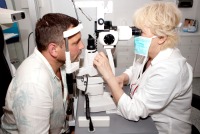A study is being undertaken to determine the potential of a certain compound as a potential therapy for a condition known as diabetic retinopathy. A compound known as (+)- pentazocine has been found to be very effective in restoring retinal health during studies with diabetic mice. The researchers are further trying to understand how this drug works and whether the same beneficial effects may also occur in humans.
Diabetic retinopathy is a condition that results from the destruction of the retina, a thin layer located at the back of the eyeball that converts light into signals that the brain processes to form images. This condition is considered as the leading cause of blindness among working-age Americans. This condition is quite common among diabetics as a result of high glucose levels which can lead to retinal injury.
Researchers from the Vision Discovery Institute at the Medical College of Georgia have been able to interrupt the first wave of cell destruction in the retina using the drug (+)- pentazocine in diabetic mice models. The said drug is known for its pain relieving power. The researchers believe that the drug works to prevent further cell damage in the retina by reducing cell stress.
The researchers, headed by Dr. Sylvia Smith, retinal cell biologist and co-director of the Vision Discovery Institute at the Medical College of Georgia, have further proof that oxidative stress may have a key role in cell damage as a result of diabetes. The stress increases the binding of sigma receptors to BiP, a known stress protein. Sigma receptors are known to help cells cope up with stress.
Although some things remain unclear to the researchers, it seems that (+)- pentazocine used in diabetic mice reduces the binding between sigma receptors to BiP to a non-stressed level which restores the retina into a healthier state.
According to Smith, “We know (+)- pentazocine binds to sigma receptors, but one of the things we don’t know is if the binding blocks or promotes sigma receptor action.” In order to further investigate the said drug, the researchers have been given a $1.5 million grant by the National Eye Institute in order to test their cell theory and fill in the gaps of their knowledge on how the said drug works.
“We want to know if this drug has the potential to block the visual devastation that can occur with diabetes. That means we need to know more about how and when it is effective,” Smith further added.
Source: Medical College of Georgia. “Potential Drug Therapy for Diabetic Retinopathy Under Study.” ScienceDaily, 8 November 2010. Web. 10 November 2010. <http://www.sciencedaily.com /releases/2010/11/101108161220.htm>
Tags: cell damage, Diabetes News, diabetic retinopathy, drug therapy, high glucose level, potential durg treatment, retinal damage
